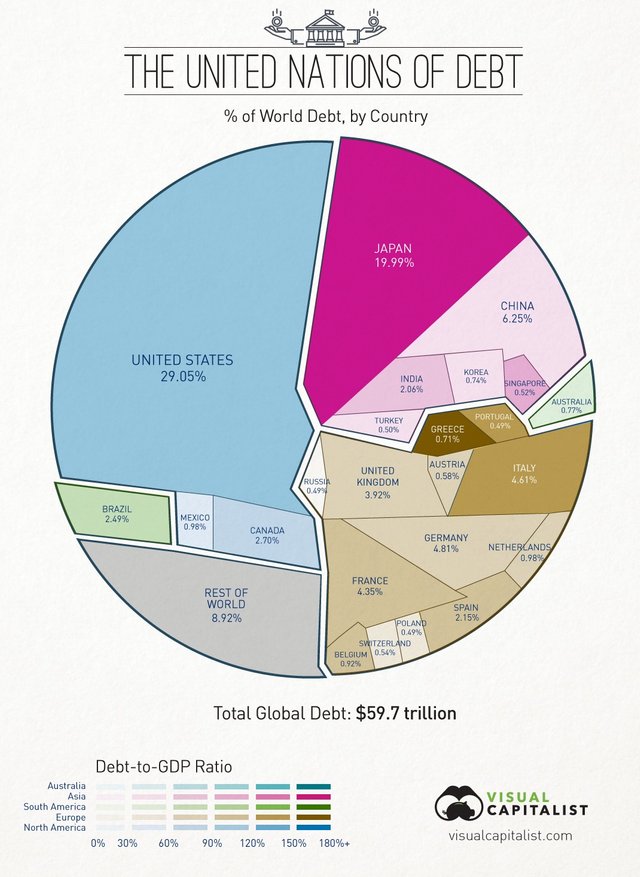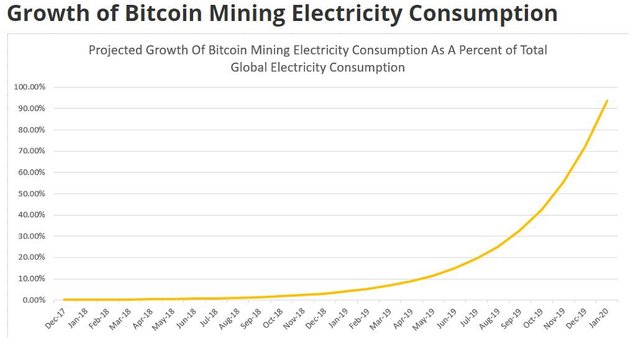Welcome To The Karmaconomy
The New Experience-Based Fair Economy
Why do we need a new economy?
What is money? How do we value it? Why do we need it? These are the questions every economics undergrad must answer on their first day of school. It is the foundation on which most of our society operates and yet very few people understand how our modern fiat money system actually works. Hell, even the most influential economists struggle with some of the modern day complexities in which value is ascertained. But if you ask a child they seem to get it pretty quickly. Money gets us stuff, we value it based on how much it currently costs to get a candy bar and we need it because well, we like candy! Pretty simple right? Well not really.
In today’s central bank-run world, money is a debt-based instrument backed by the power of central banks and their cash printing presses. They use complex instruments and pegging techniques (‘petrodollar’) to obfuscate and add so many layers to the economic merit of the currency that it requires an advanced degree in Keynesian Economics to make sense of anything. This is intentional. Basically, our current economy is based entirely on the concept that debt is good and the more people who are able to build debt, the stronger the economy. This debt allows central banks to print more money out of thin air and then charge governments interest to distribute it to its citizens. Furthermore, banks get to take this air money, digitize it and loan it out at a fraction of the actual sum they hold. So, for example, if they have $1 mil on hand, they can loan out a ten times that with no risk of default because they are secured by the very government paying the interest on the original sum. Seems pretty crazy right?
“Give me control of a nation’s money and I care not who makes it’s laws” — Mayer Amschel Bauer Rothschild
Fiat systems historically last at most about a hundred years before the house of cards falls. We are just about there in the current fiat cycle and everywhere you look the fractures are apparent. With over a quadrillion in derivative debt that far exceeds the world’s gross GDP, it feels like we are an elephant balancing on a beach ball on top of a needle. There is no place to go. The chart below is conservative at best but still a great visualization of the growing monster.

So what is the answer? Where can we go from here? Precious metals? Government backed cryptocurrency? Will governments simply wipe the debt away like some US politicians are currently proposing? What would be the consequences?
What is the answer?
Lots of questions and very little answers. Either way, it is clear that we are in big trouble. There needs to be a better vehicle for exchange. A new type of money that works in our ever-shrinking world. Precious metals are sound money and historically proven but also highly antiquated and impractical in our digital age. Government-backed cryptocurrencies, while better than the current central bank owned fiat money, would still be centralized and manipulated by bureaucrats and their crony lobbyists. What we need is a truly decentralized currency who’s value is held in consensus by the citizens of the world and valued in a way that is democratic and fair for all. Bitcoin was the first answer to this and it is a super viable means of store of value. It is decentralized to a point and its value is defined by the energy it takes for computers to mine new coin and maintain this consensus. Bitcoin also has its problems.
Bitcoin is powered through Proof Of Work which uses the computational power of computers as the driving force behind its valuation. The energy needed to run these machines and hash the complex encrypted data requires real-world resources and time which, in turn provides the value behind the represented asset that is a Bitcoin. A truly brilliant concept by a truly brilliant person(s), it started the cryptocurrency revolution we are currently witnessing. However, the issue with Proof Of Work is in the very nature of the competitive and accelerating race for hash power. While this is important for driving the Bitcoin economy it also has its costs. The environmental impact has been well documented as many third-world countries have become havens for large mining pools who take advantage of cheap, dirty electricity to power massive mining farms. This has also led to increased centralization where these miners control a vast amount of the ‘hash power’ and thus the super important consensus on the blockchain. We saw what happened with the Bitcoin Cash fork in 2017, where Chinese mining pools used their mighty hash power to influence the policy of where Bitcoin was to go. What resulted was a hard fork that diluted the influence and reach of the currency.

So, while Bitcoin gets us close to an answer, we feel like there is a better way and this lies once again in how we value the currency. Is there a better decentralized means in which to power consensus and give the currency value? What is universal to all humankind and is already happening every second of every day? The answer we came up with is ‘Experiences’. Everyone is experiencing something pretty much all the time. Currently, while reading this paper, you are having an experience. From walking your dog to going to a movie, humans love to experience stuff. That is why we were put on this planet. Every experience requires energy and time. What if there was a way to harness this energy and qualify it in a way that could be stored on the blockchain and used as a valuation for a new type of currency? This is the idea that sparked the creation of a new experience-based fair economy. We call it the Karmaconomy.
What is the Karmaconomy?
Thanks to the brilliant innovation that is the blockchain, we now have the ability to save data on an immutable ledger that, if held in correct consensus, cannot be corrupted by centralized agents of control or authority. This data can be used to qualify and quantify all aspects of reality if applied correctly. In the Karmaconomy we apply this to human experiences through the new Proof Of Experience protocol. With Proof Of Experience, we are able to, in essence, capture experiences and give them a ‘score’ in the form of a digital asset or token. This tokenized experience is then used in a complex algorithm to define the weight of that individual on the network and apply it to the consensus mechanism. In simpler terms, individuals in the Karmaconomy are rewarded for having valuable experiences and use that to mine the blockchain. The more valuable the experience as deemed by the protocol, the more cryptocurrency the individual can earn.
How would this actually work in the real world? Heres an obvious example. Let’s say a church plans to throw their annual Octoberfest carnival and wants to sell tickets for rides, food, games, etc. In the Karmaconomy they would create this Experience in the Open Experience Market, define the cost per ticket (or open it to supply and demand pricing) and allow for anyone who holds the Karmaconomy coin (KMX) to purchase tickets on the platform. Upon arrival, those who have purchased these digital tickets can redeem them at the gate and, in doing so, receive Experience Points as Proof of Experience for physically attending the Experience. The public benefits by gaining these rewards (additional mined KMX) for proving their experience and the church benefits from increased sales thanks to these rewards.
The entire ecosystem benefits from the consensus that is bolstered by these quality experiences added to the blockchain. What’s more, as attendees enter the carnival and engage with other vendors, entertainers and amusements there can be infinite additional experiences proven and applied to the blockchain, thus giving them opportunity to earn more coin which they can then spend in the economy. We now have a self-feeding loop of karmic exchange.
So how does this all really work?
Karmaship is the platform in which this new Karmaconomy will run. It is currently in development but our grey paper explains the theory and code in which Proof Of Experience and the decentralized validation mechanisms work. What is crucial to this new technology is the absence of centralized validators. We believe we have cracked that code! Our grey paper is available to read here. Our phase 1 launch of the ecosystem is planned to start with a free airdrop of coin at the genesis experience, Outside In Equinox, which is taking place Sept. 21–23 in the mountains of Santa Barbara, CA. For more information please visit our website or join our community on Discord!
Lots more Steemit posts to come as well!!
Join The Community!
Discord (Official Community): http://bit.ly/2L7GoFJ
Telegram: http://bit.ly/2nQeFA8
Github: http://bit.ly/2OQYsq1
Twitter: http://bit.ly/2nPdqkD
Medium: http://bit.ly/2wf1MDB
Reddit: http://bit.ly/2Np3Fbr